The document provides a comprehensive overview of the C programming language, including its history, data types, constants, operators, control statements, and arrays. It details basic concepts, such as the use of the printf() and scanf() functions, and describes different types of decision control and case control statements. Additionally, the document explains the structure of arrays in C and highlights the importance of data types in defining variables.
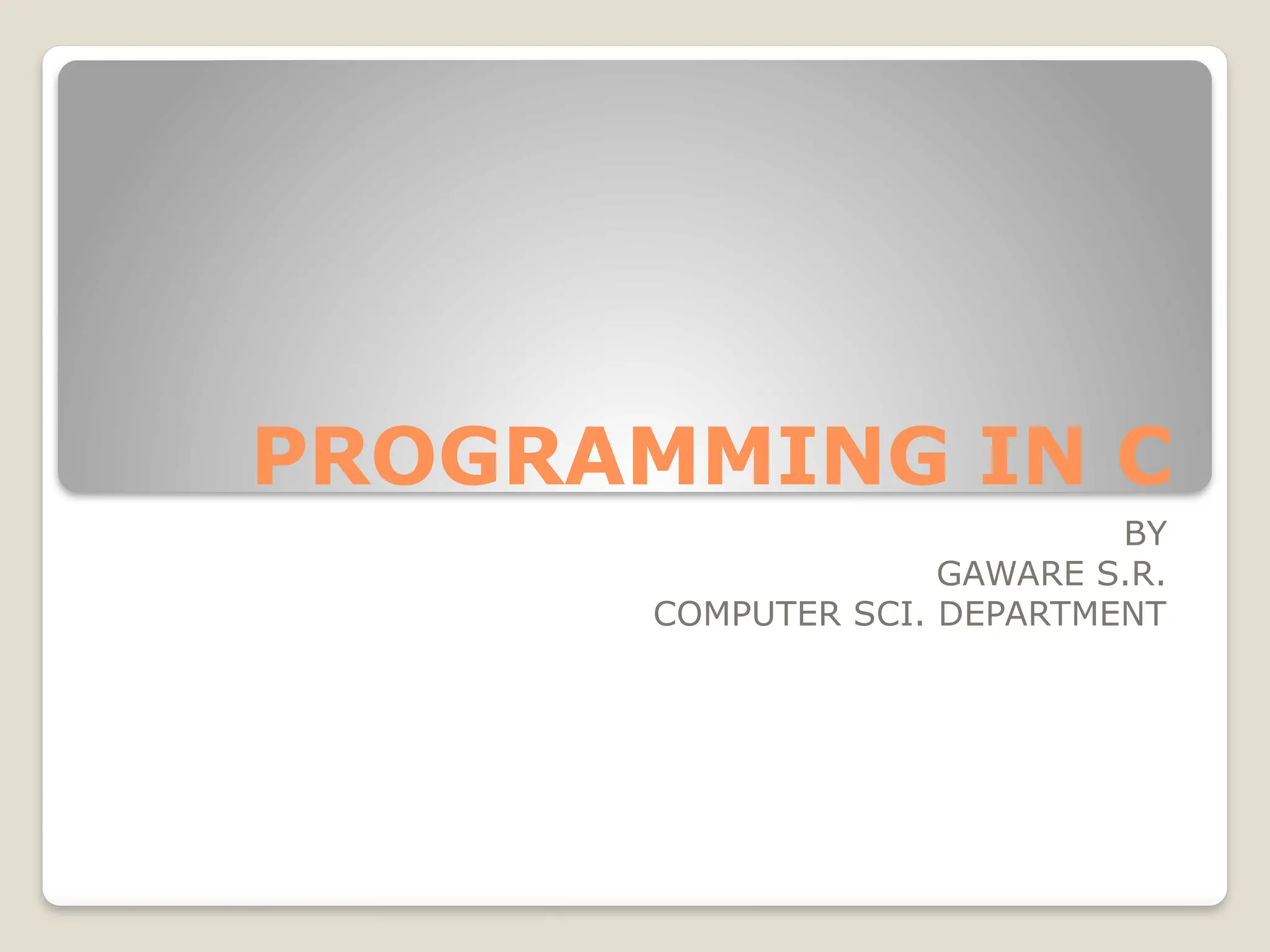
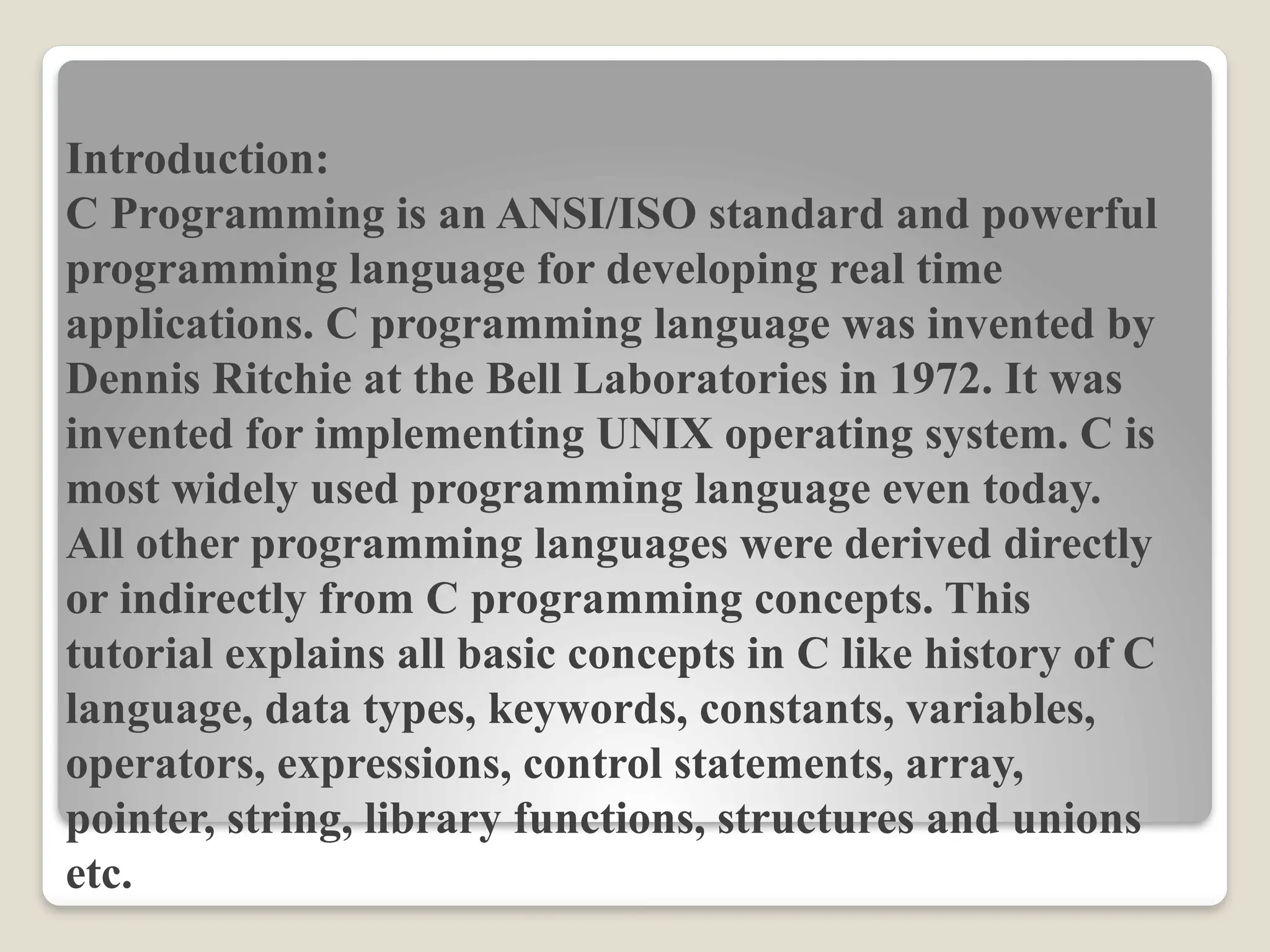
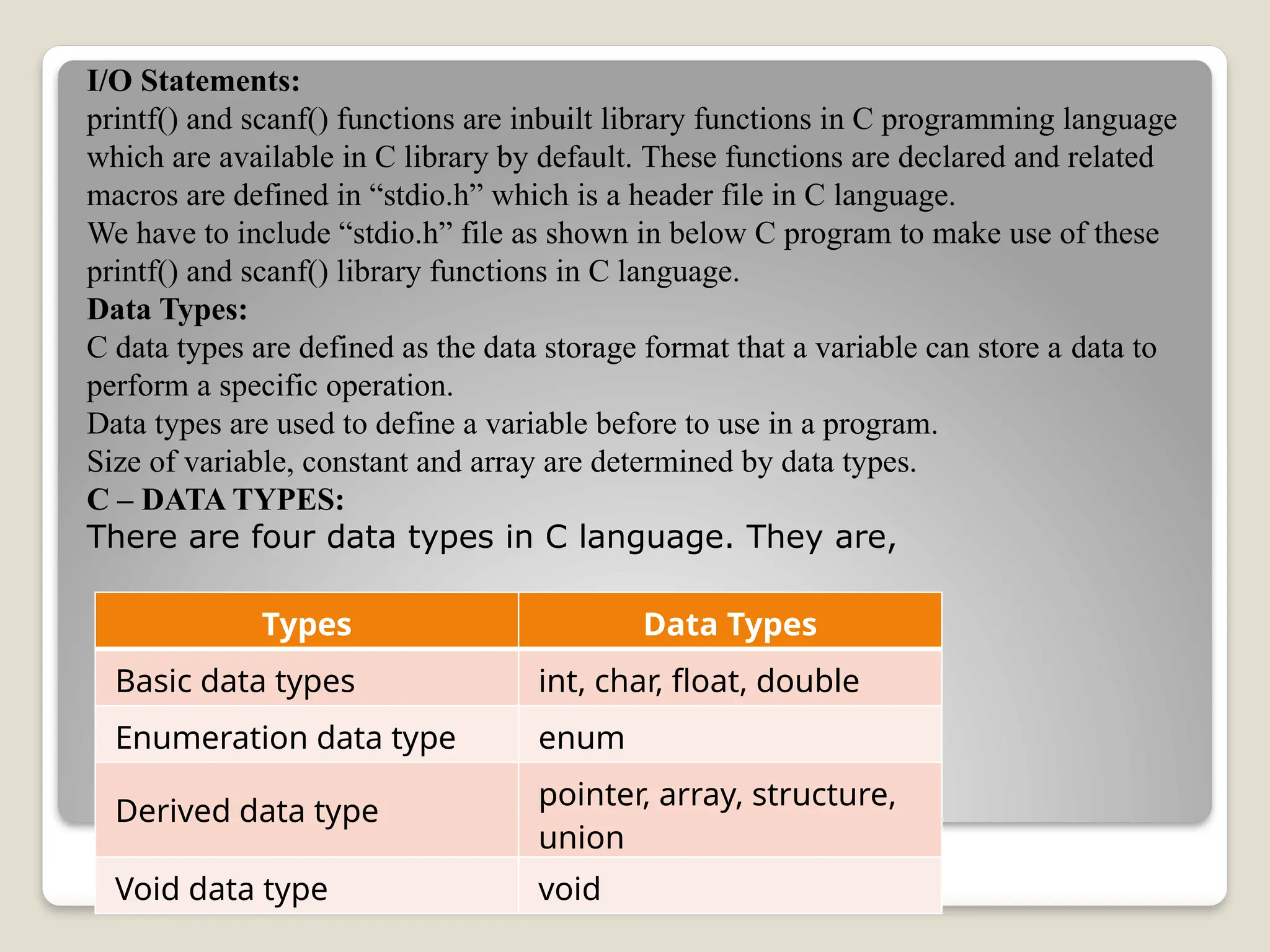
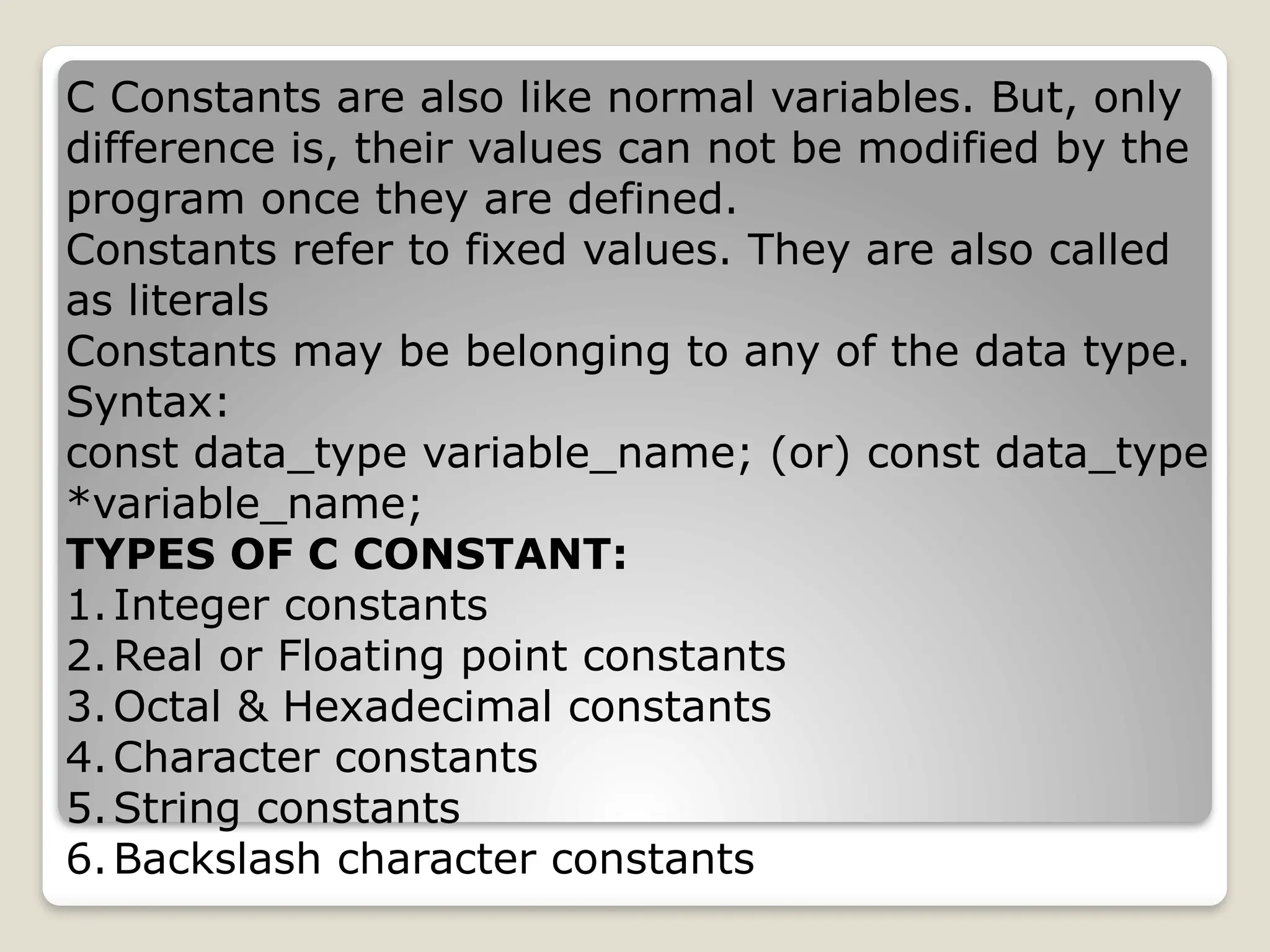
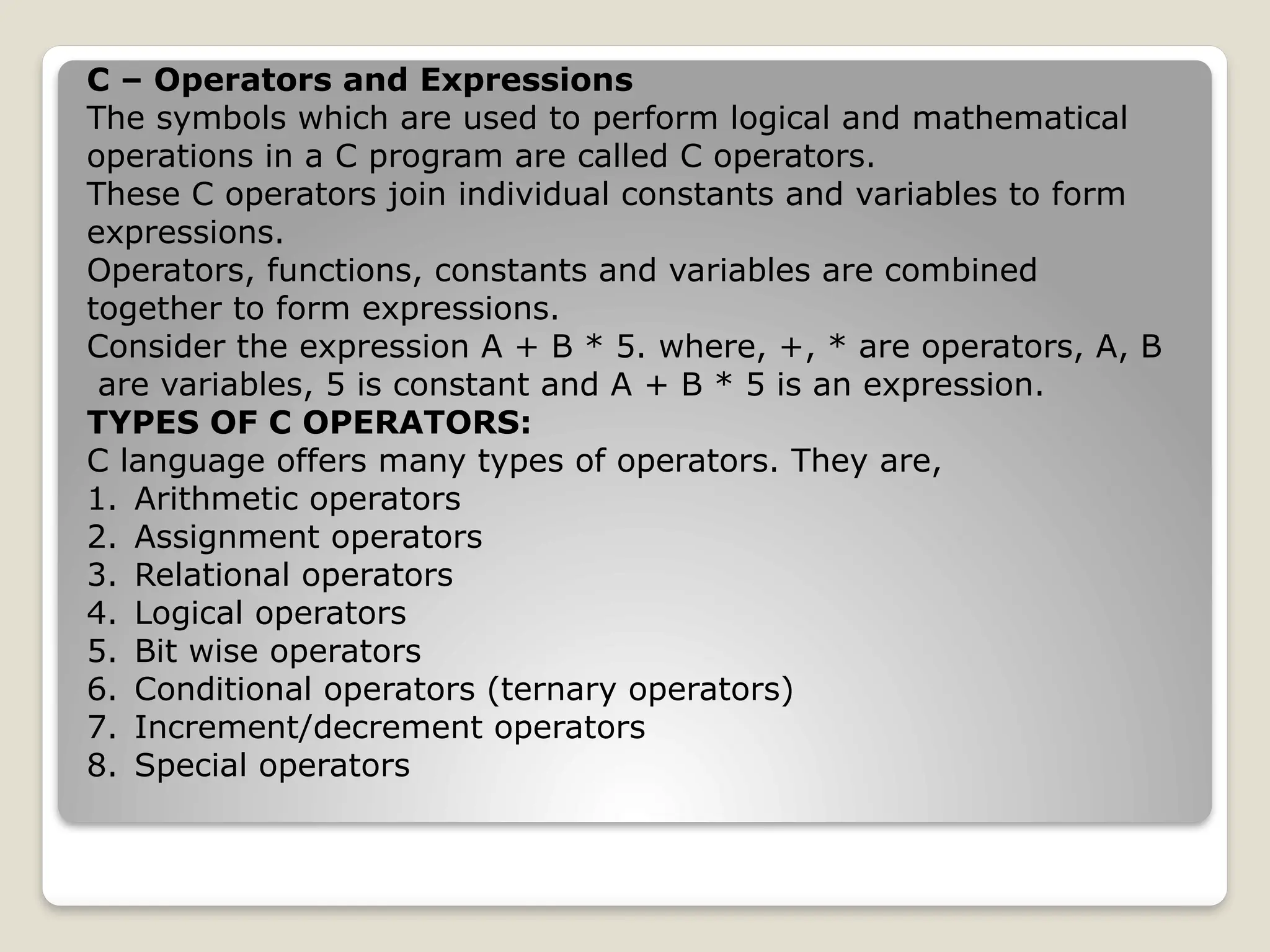
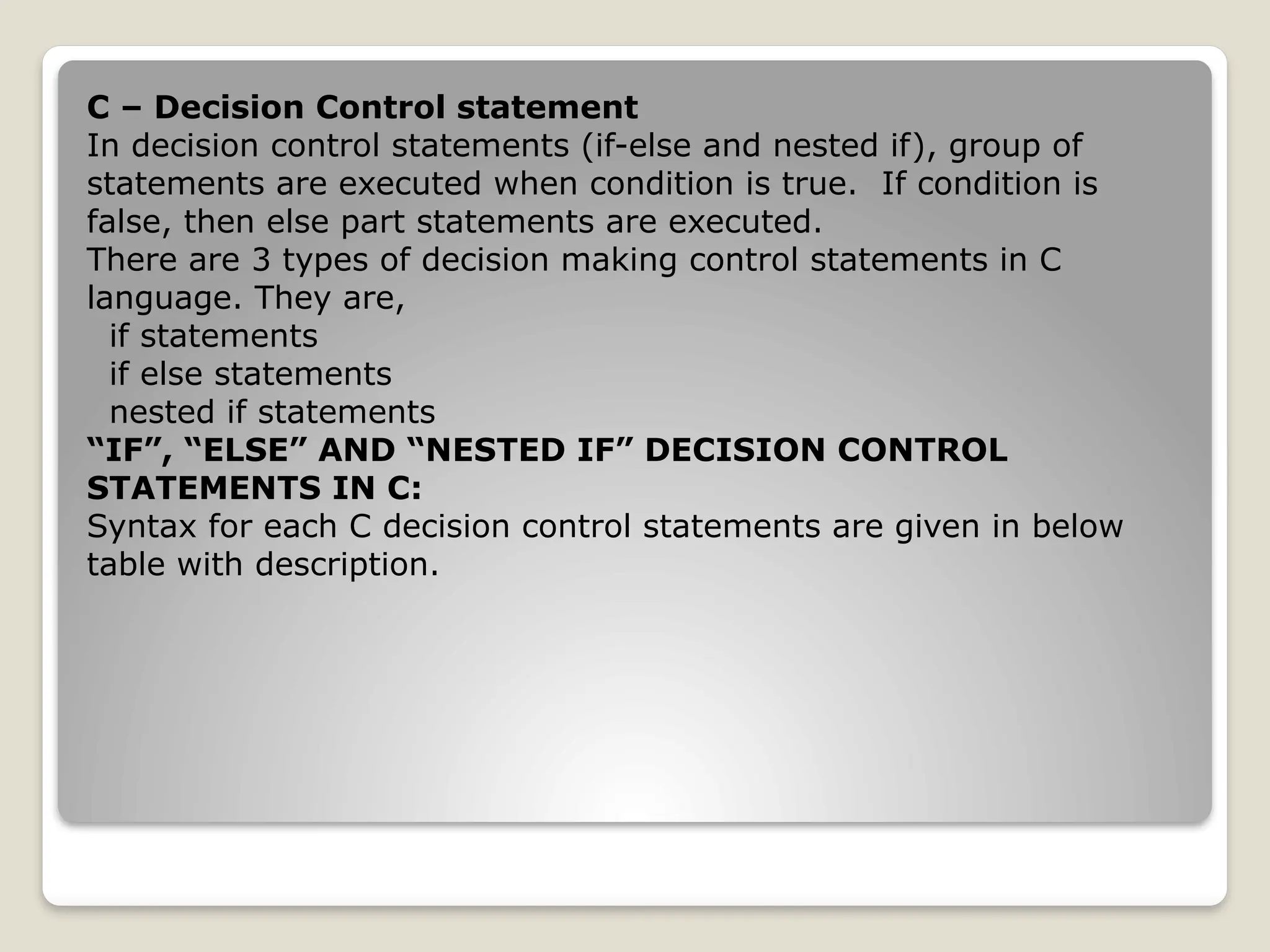
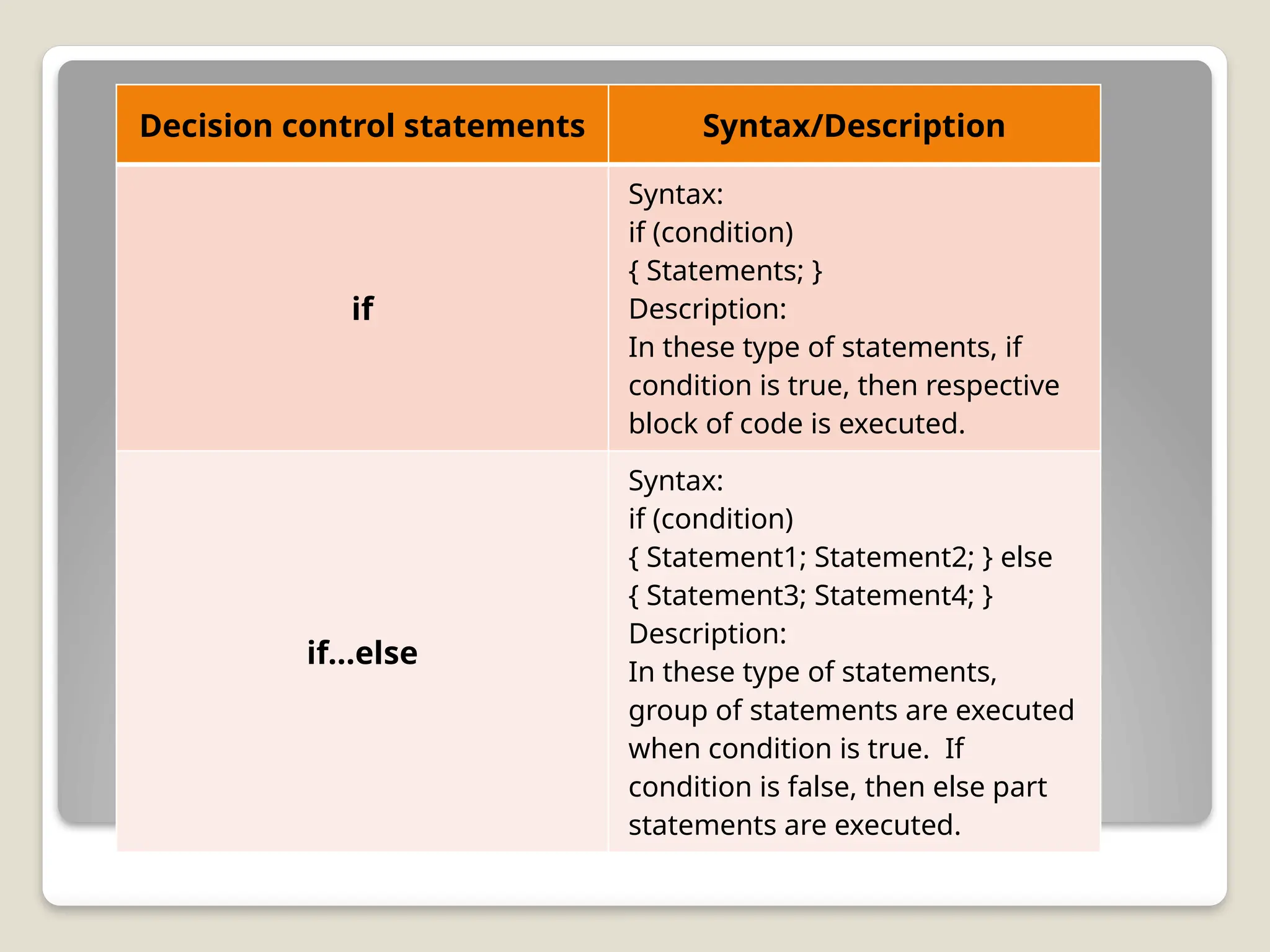
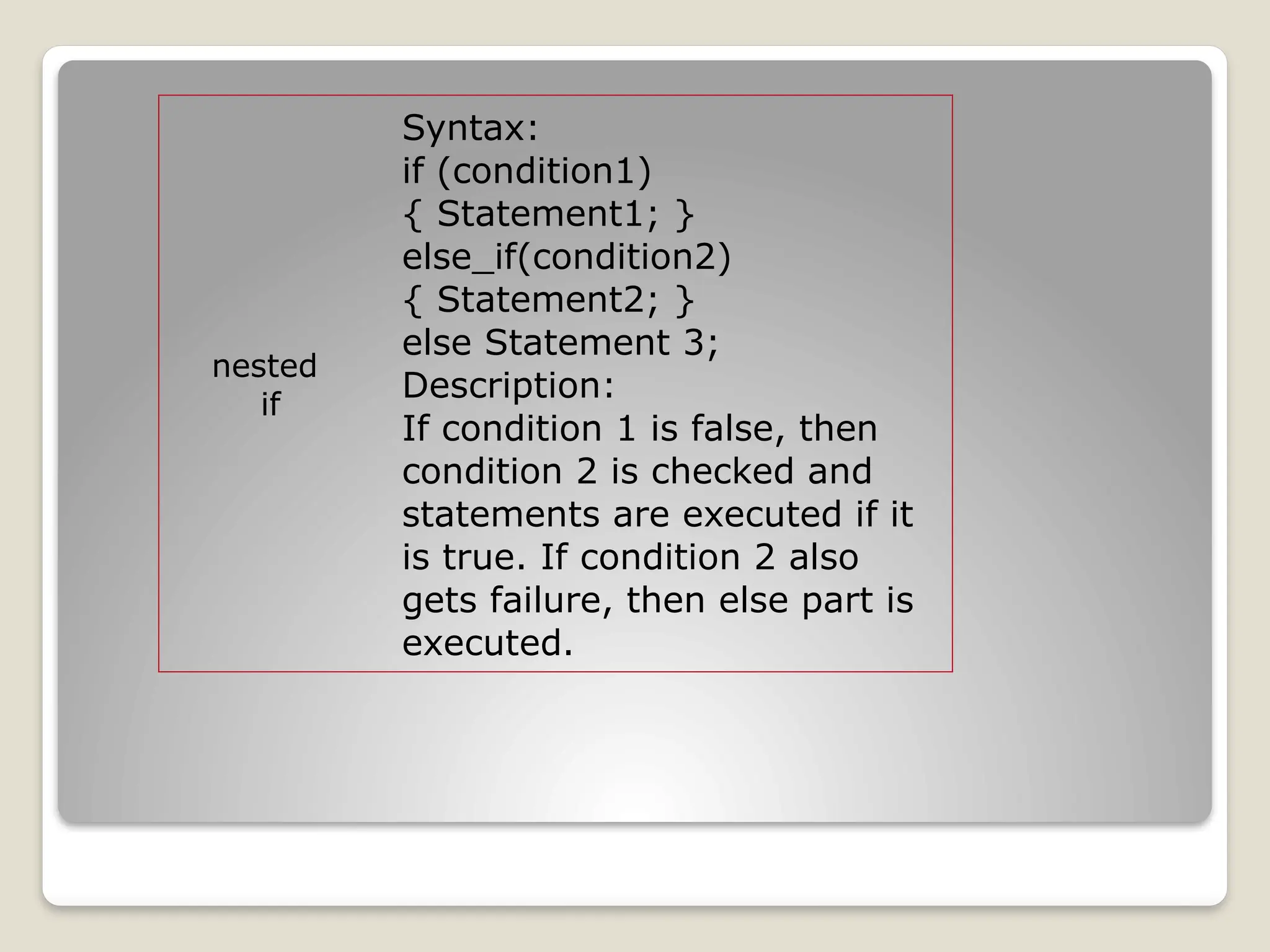
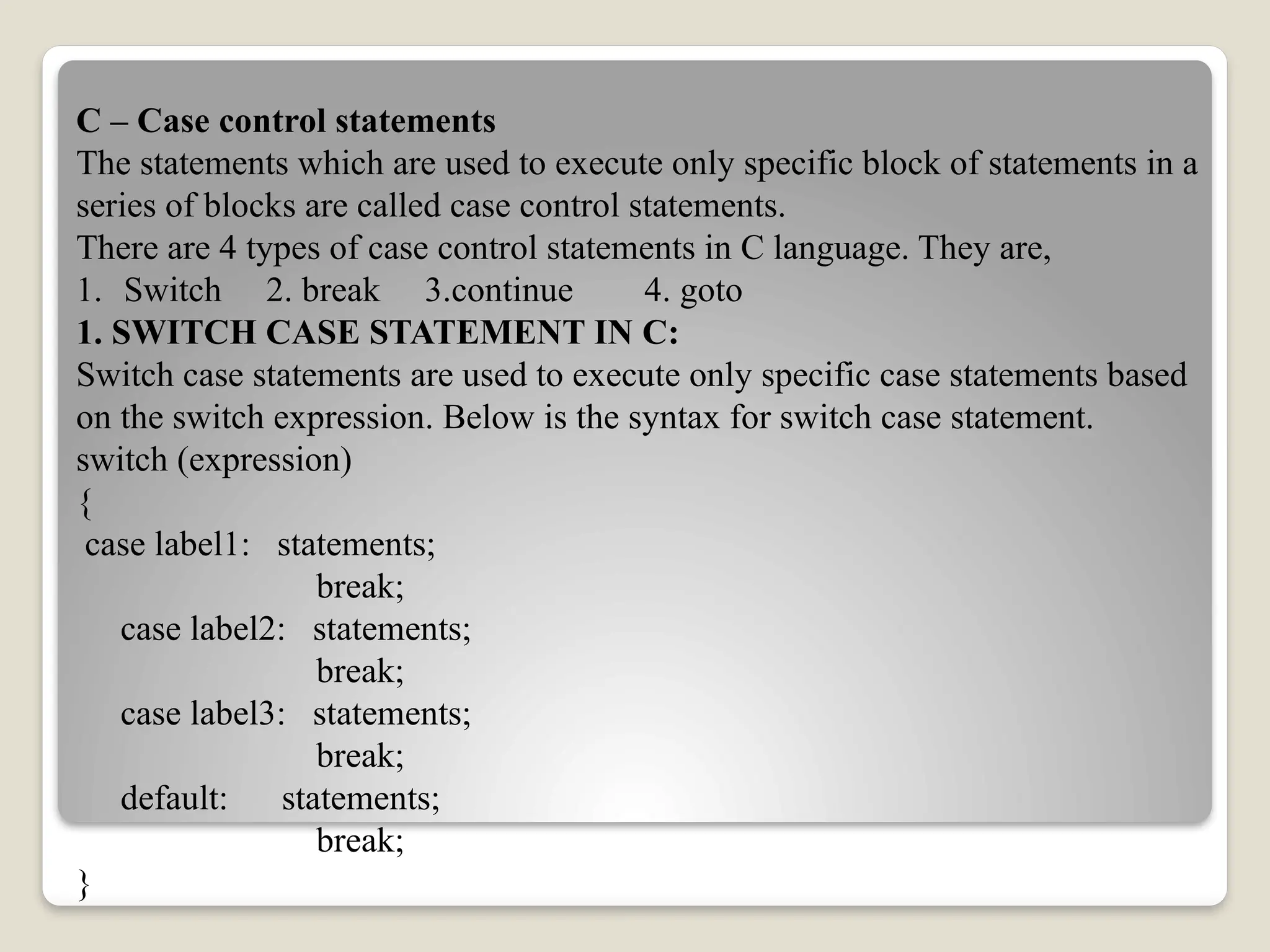
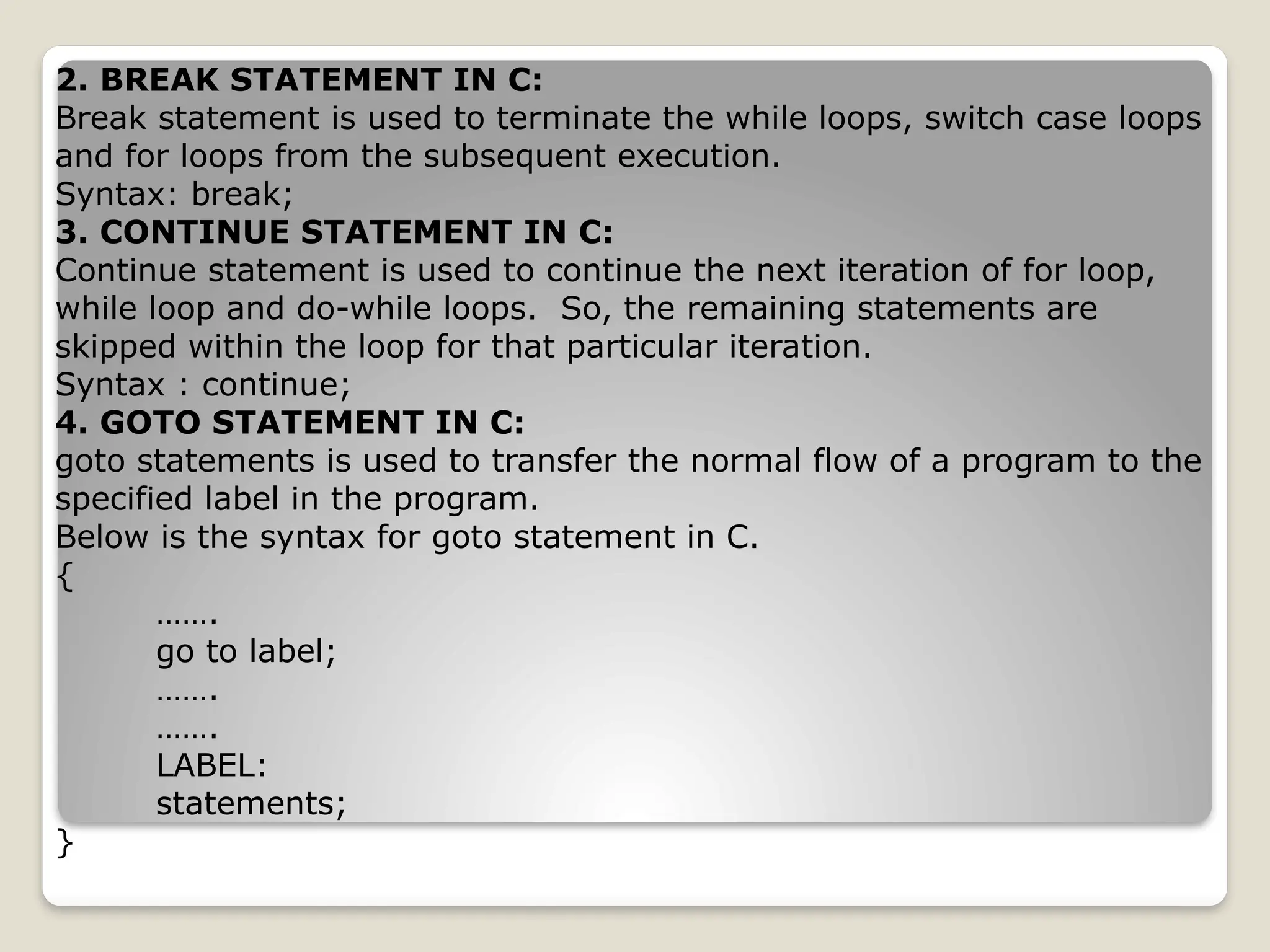
![C – Array
C Array is a collection of variables belongings to the same data type. You can store group
of data of same data type in an array.
Array might be belonging to any of the data types
Array size must be a constant value.
Always, Contiguous (adjacent) memory locations are used to store array elements in
memory.
It is a best practice to initialize an array to zero or null while declaring, if we don’t assign
any values to array.
EXAMPLE FOR C ARRAYS:
int a[10]; // integer array
char b[10]; // character array i.e. string
TYPES OF C ARRAYS:
There are 2 types of C arrays. They are,
One dimensional array
Multi dimensional array
1. ONE DIMENSIONALARRAY IN C:
Syntax : data-type arr_name[array_size];
2. TWO DIMENSIONALARRAY IN C:
Two dimensional array is nothing but array of array.
syntax : data_type array_name[num_of_rows][num_of_column];](https://image.slidesharecdn.com/c-programming-241231041706-329bf089/75/c-programming-functions-in-c-programming-pptx-11-2048.jpg)